
Living or visiting Hawaii and wondering what bird you’re looking at? This article covers the most common birds of Hawaii. Odds are high the bird you’re looking at is one of them. It will also inform you on how to identify them.
Searching for some of the rarest birds on earth in one of the most stunning landscapes in the world is an incredible experience. Hawaii’s volcanic origins has created a home for more than 350 different bird species, including 59 birds that are unique to this island paradise and cannot be found anywhere else. Birders should visit all four main islands, the “Big Island,” Kauai, Oahu, and Maui. The sights will be spectacular – as will the birds.
Hawaii Volcanoes National Park on the Big Island is a 500-square-mile park with some occasional volcanic activities. The Hawaiian Goose can frequently be spotted here, as can the Hawaiian Hawk, and the Hawaii Amakihi. A good place to look is the 1.2 Rim Drive loop.
Koke’e State Park is on Kauai and is one of Hawaii’s best birding spots. The mere drive to the park has stunning surroundings and sights. Birders should find Hawaiian Goose, Akekee, Anianiau, and other precious species here.
Haleakala National Park is 10,000 above sea level. Hosmer Grove is within the park and is inhabited by the Hawaiian Goose, Hawaii Amakihi, Apapane, and the Maui Alauahio.
Kealia Pond National Wildlife Refuge on Maui has the Hawaiian Coot and the Black-neck Stilt. Birders might also see a Black-crowned Night Heron, Wandering Tattler, Pacific Golden-Plover, and other shorebirds.
James Campbell National Wildlife Refuge on Oahu is home to several protected, endangered species, such as the Hawaiian Coot, the Hawaiian monk seal, the Black-crowned Night Heron, and others. There are birding tours from October through January on Saturday mornings. Makapu’u Point is an excellent place to spot seabirds such as the Wedge-tailed Shearwater, Great Frigatebird, Red-tailed Tropicbird, and others.
Common Birds of Hawaii
Laysan Albatross
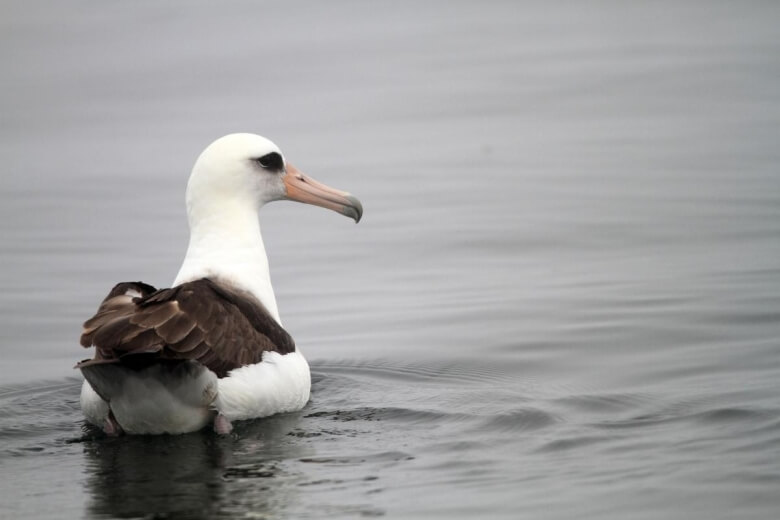
Laysan Albatross nest in the Kilauea Point National Wildlife Refuge, Midway Atoll, and Laysan Island by digging a hole in the sand. These remarkable birds can live for over 65 years. They are large seabirds with long, narrow wings that have an incredible 80-inch span.
The head is gray while the underbelly is white, and the white wings are encased in brown edges. They have dark circles around their eyes. Both sexes grow between 31.1 and 31.9 inches in length and weigh 77.6 to 151.7 ounces with a wingspan between 76.8 and 80 inches. They forage by soaring above the ocean waters in search of crustaceans, fish eggs, and whatever fishing boats toss overboard.
Hawaiian Petrel
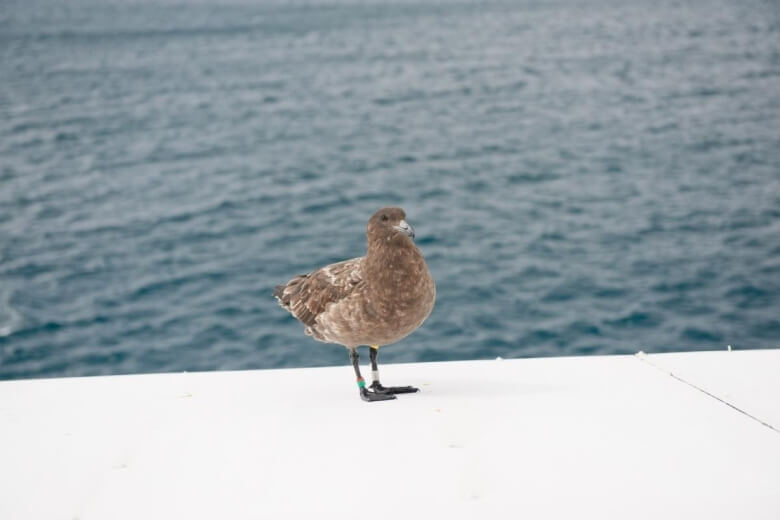
Hawaiian Petrel can be seen in Hawaii’s Volcanoes National Park on the slopes of Mauna Loa, and they nest in Hawaii’s mountains. They are dark above with a white head and underbelly while the underwings have a black bar. The Petrel grows 16 inches in length and has a wingspan of three feet. They dive into the waters for squid, fish, and crustaceans.
White-Rumped Shama
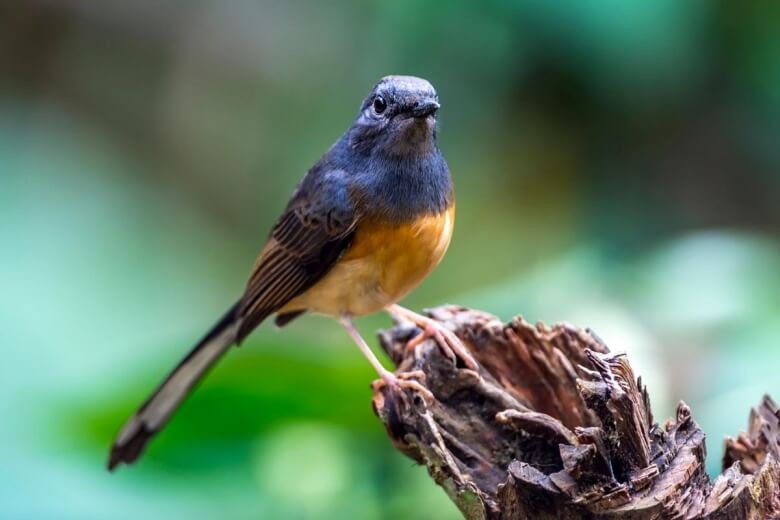
White-Rumped Shama can be found by the hills in Honolulu, the Lyon Arboretum, Kuli’ou’ou Valley, and most of Kauai, and are known to be fabulous singers. The male has dark plumage and an orange breast with a white rump and tail feathers. The bill and eyes are black, and the legs are pink. Their tail is very thin and long, making up half of their 10 inches of length. They feed on insects and fruits. The White-Rumped Shama weighs between 1.0 and 1.2 ounces.
‘I’iwi
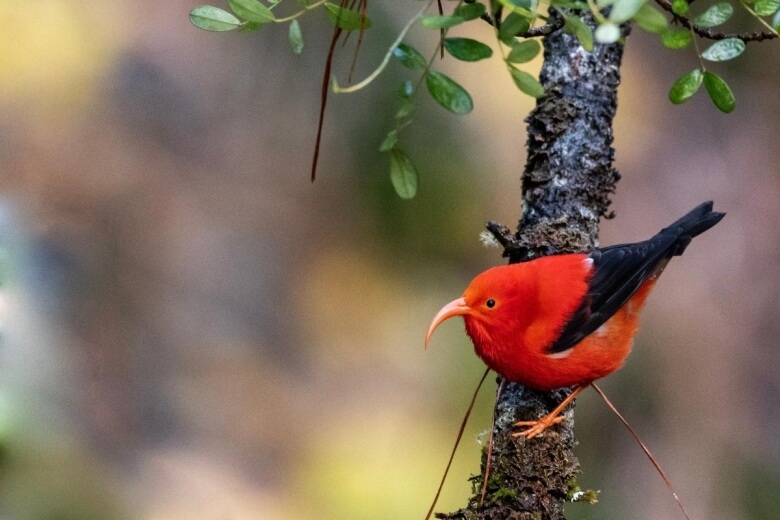
‘I’iwi is a native who lives in the Hawaiian forests at high altitudes on Maui and Kauai, although birders on Molokai and Oahu may get lucky. They are stunningly red with black wings and tails. They grow 6 inches in length. Their curved salmon-colored beak is perfect for reaching the nectar from local flowers, and they will also feed on insects. Contrary to the majority of Hawaiian birds, the ‘I’iwi does not feed on seafood.
Red-Tailed Tropicbird
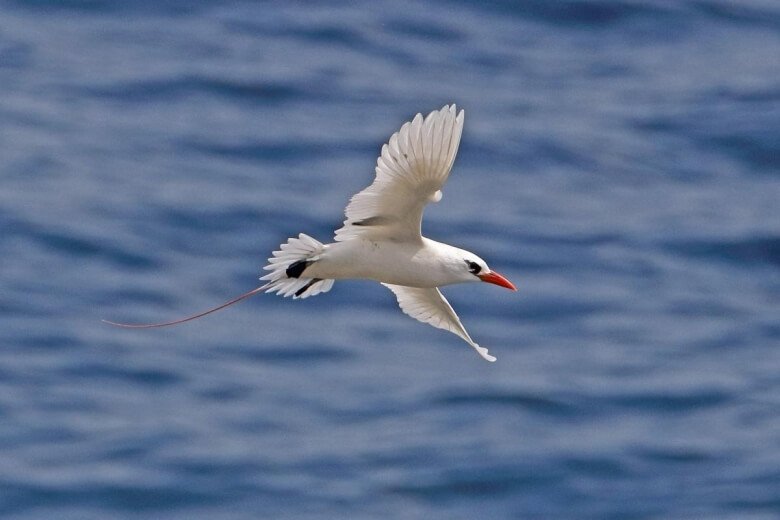
Red-Tailed Tropicbird are easily recognized by their thin long red tail. They are white all over with black lines around the eyes and a red bill. They grow between 37 and 41 inches (which includes 14 inches of tail) and weigh 30 ounces with a wingspan close to 4 feet. The Red-Tailed Tropicbird roosts in ocean cliffs throughout Hawaii, especially Kilauea Point, where they breed from February to October. These seabirds bomb-dive into the water for fish, squid, and crustaceans.
Black Birds in Hawaii
Hawaiian Crow
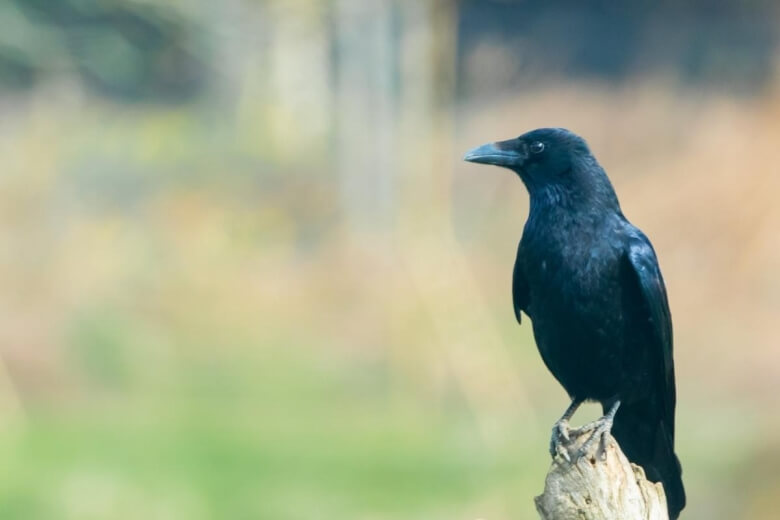
Hawaiian Crow can be found in higher elevation forests and shrubby habitats with fruit.
They will eat almost anything but enjoy snails and small invertebrates. Sometimes, they eat flowers and carrion. They grow between 18 to 20 inches and weigh 1 to 1.2 pounds.
Hawaiian Stilt
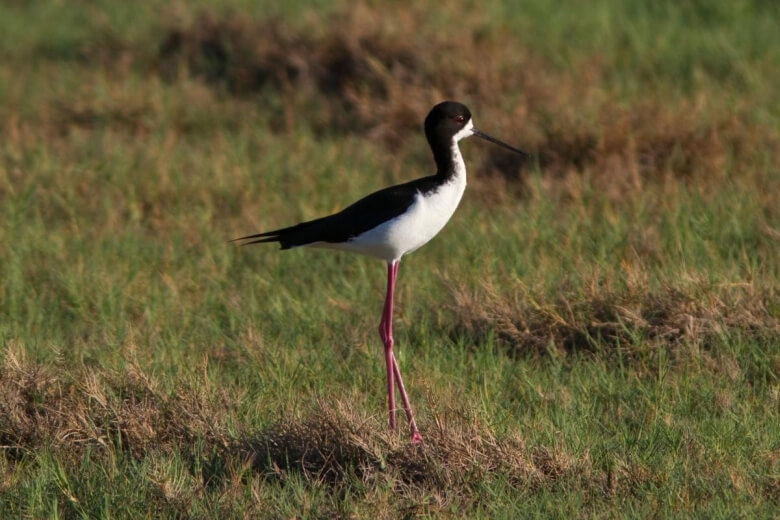
Hawaiian Stilt has a black back and bill and a white forehead and underbelly. The female may have brown shades on her back. Their distinctive feature is their incredibly long pink legs which make up a large part of their 15-inch length. The Hawaiian stilts inhabit the shorelines and wetlands and feed on crustaceans and aquatic insects.
Hawaiian Coots
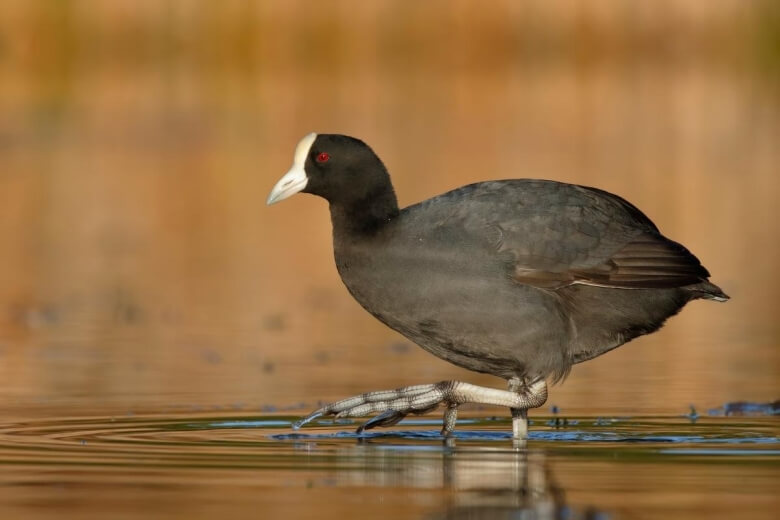
Hawaiian Coots can be found in Hawaii’s wetlands. They have a black body with a white forehead sporting a bulbous white beak. They grow between 13 to 16 inches in length and weigh 1 lb. 9 ounces. They forage in the water by searching for small fish and insects.
Blue Birds in Hawaii
With all its colorful and beautiful birds, Hawaii does not have any blue birds, although a few Belted Kingfishers, Blue-Winged Teals, and Barn Swallows may end up here almost by accident.
Red Birds in Hawaii
Red Cardinal
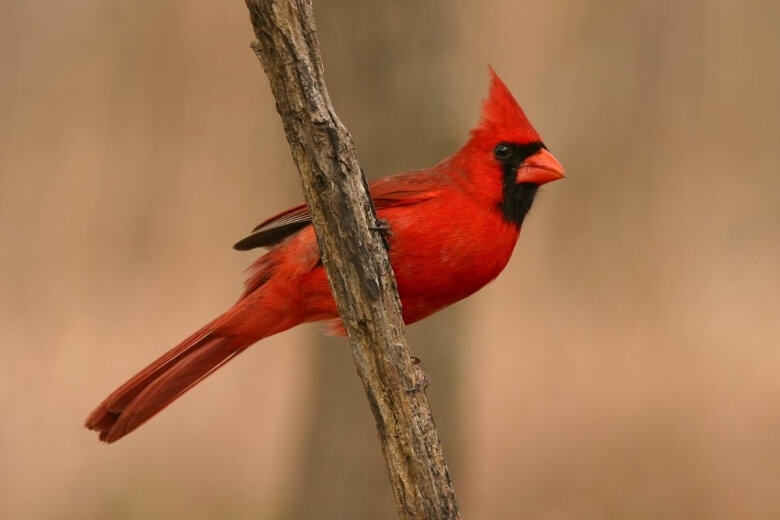
Red Cardinal can be found on all Hawaiian Islands. It is a stunning, large bird with a long tail and a short, thick bill. The male is a vivid red and a black area around the bill. The female is a dull brown with hints of red in the wings and tail. Both sexes grow to 8.3 to 9.1 inches in length and weigh 1.5 to 1.7 inches with a wingspan of 9.8 between 9.8 to 12.2 inches.
They inhabit shrubby areas, backyards, and parks where they forage insects, spiders, fruit, and snail. They use their fierce beak to crack open seeds.
Red Avadavat
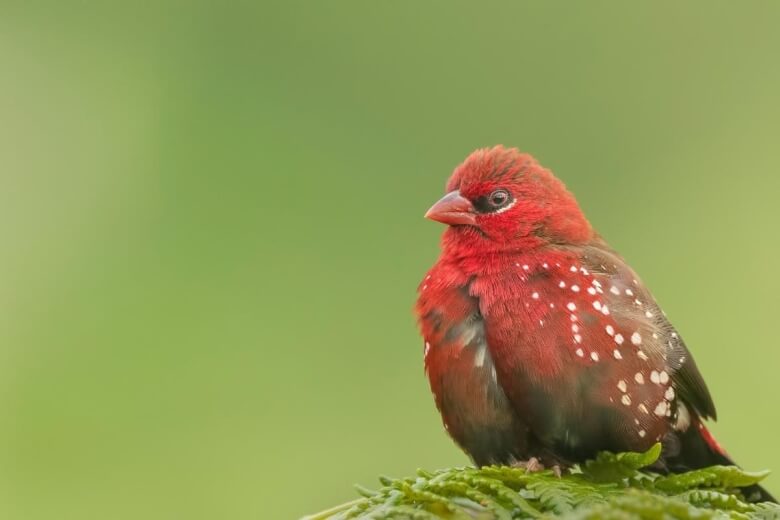
Red Avadavat can be found in the marshy sections of Oahu, Kauai, Hawaii, and Maui. They are strawberry-colored with a few white and brown spots. The female, as usual, is a bit duller. They grow to 4 inches and weigh 0.25 ounces with a wingspan between 4.5 and 5.5 inches. They usually forage for grass seeds but will settle for termites and fruit flies.
Red-footed Booby
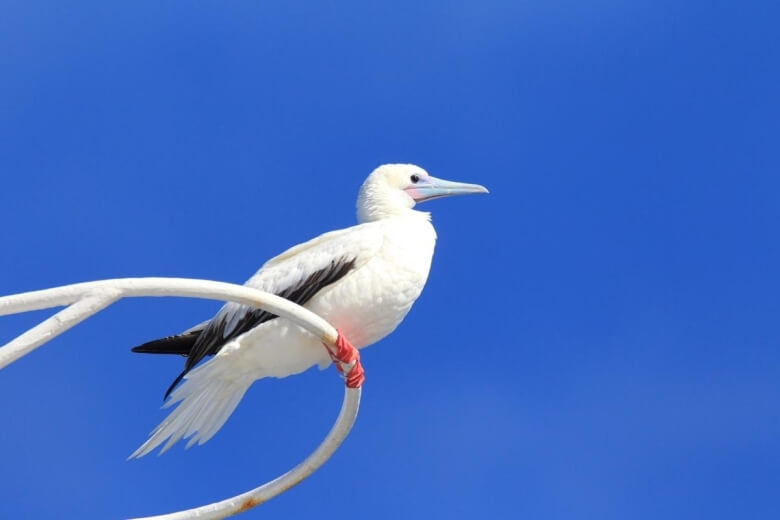
Red-footed Booby is seen all around Hawaii, especially Makapu’u Point on Oahu and Pauwalu Point on Maui. This is a slim bird with a long tail and a blue bill. Its body isn’t red; the red part is the humongous feet that cannot be ignored – like a toddler dressing up in a parent’s shoes. They are white with black under-feathers. The Red-footed Booby grows to 27.2 and 3.22 in length and weighs between 30.0 and 31.1 ounces with a wingspan of 59.8 inches. They fly over the ocean and bomb-dive for fish.
Orange Birds in Hawaii
Akepa
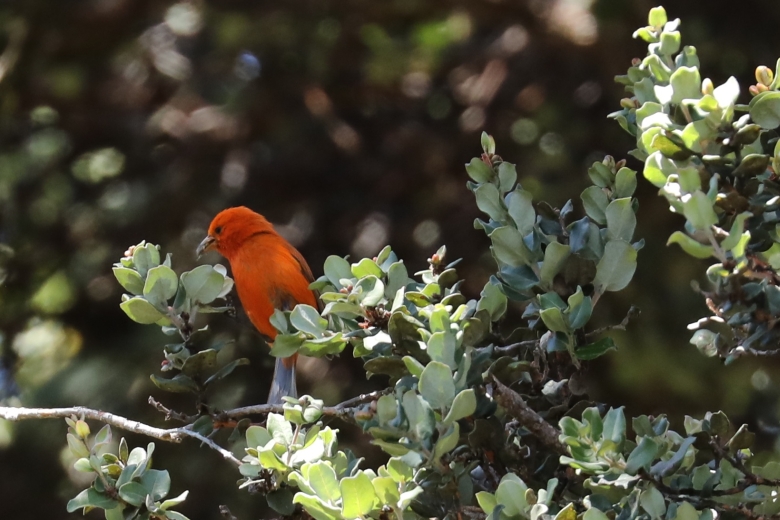
Akepa can be found in the high forest elevations of the Hakalau Forest National Wildlife Refuge and other forest habitats. It depends on the Koa and ‘Ohi’a-lehua trees for food which only these trees can provide, and this dependence is a factor in the decrease of the Akepa population. The male akepa is a bright orange, while the female is greenish yellow. They grow between 4 to 5 inches in length and weigh between 0.34 to 0.41 ounces and have a short, conical bill.
White Rumped Shama
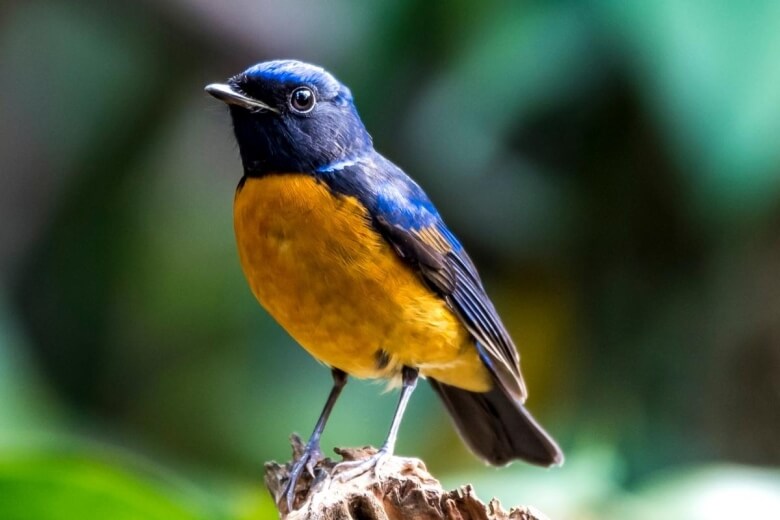
White Rumped Shama can be spotted in the forests of Oahu and Kauai where it feeds on insects and fruits. The male has a glossy black back and an orange underbelly. The rump and some tail feathers are white. The female is a bit duller, but both sexes have black eyes and pink legs. They grow 10 inches long, half of which is their long tail. They feed on insects and fruits both in trees and on the ground.
Orange-cheeked Waxbill
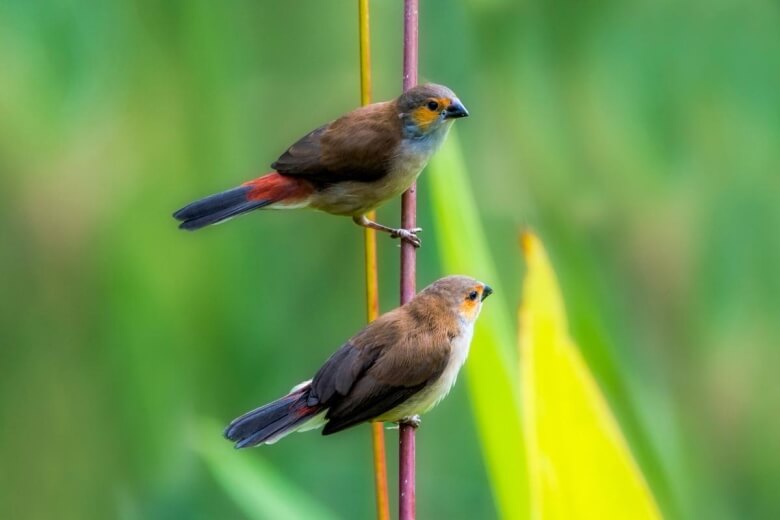
Orange-cheeked Waxbill has a brown back and a red rump, a red bill, and a pretty orange face. This small finch grows up to 4 inches in length. It can be spotted on the islands of Maui and Oahu in grasslands and scrubby areas where it forages for seeds and insects.
Yellow Birds in Hawaii
Saffron Finch
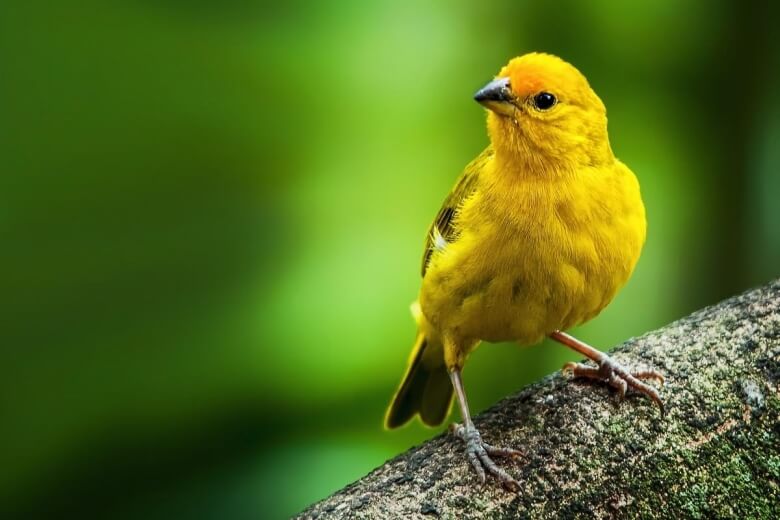
Saffron Finch lives mostly on grassy areas of Hawaii Island. They are a yellow finch with a light orange crown and some olive streaks on the back, wings, and tail. The female is a duller shade of yellow. They grow up to 5 ½ inches long. They are established on the Big Island’s Kona coast and also on Oahu, they feed mostly on insects and seeds.
Western Meadowlark
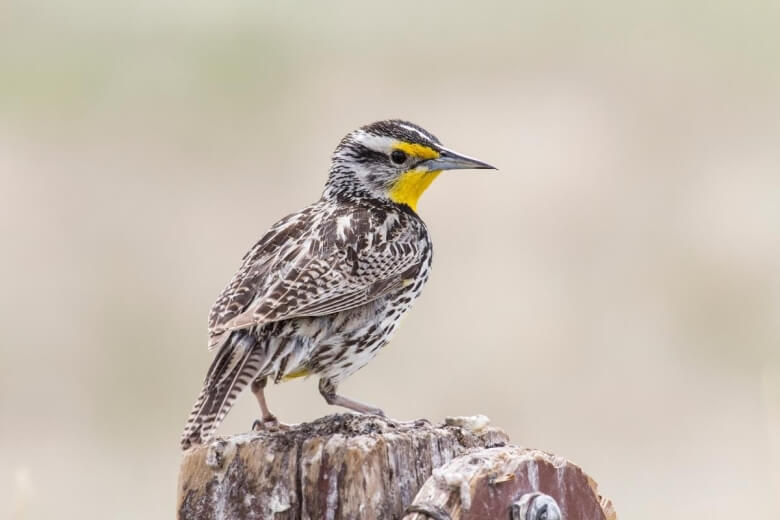
Western Meadowlark Western meadowlark can be found only on Kauai. It has a yellow underbelly with brown and white patterned wings and head. Both sexes grow 6.3 to 10.2 in length and weigh 3.1 to 4.1 ounces with a wingspan of 16.1 inches. They like grasslands and fields and feed on insects and seeds, but more seeds are consumed during the winter.
Palila
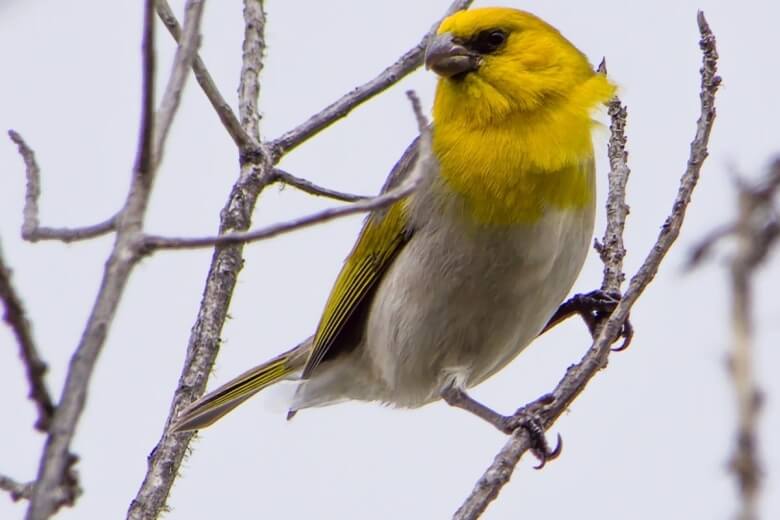
Palila can only be found on the dry Mamane forests by the southwest slopes of Mauna Kea. They have a yellow head and a gray head and belly with streaked gray and yellow wings. Their diet consists almost exclusively of the green mamane bean pod, which is toxic to other birds
Common Birds of Hawaii by Species
It should not come as a surprise that the major species of Hawaiian are water and shore birds.
Seabirds in Hawaii
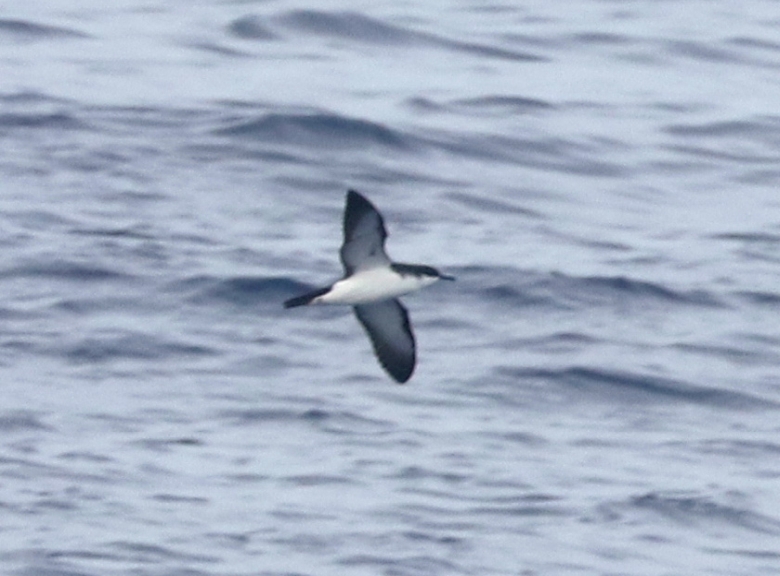
Newell’s Shearwater – Puffinus auricularis – is native to Hawaii and can be found on the slopes and cliffs of Kauai, with a few colonies existing in Maui and the Big Island. They grow to a length of 12 to 14 inches with a wingspan of 30 to 35 inches. The Newell’s Shearwater has a black head and bill with a white underbelly. It forages over the ocean and dives for squid and fish.
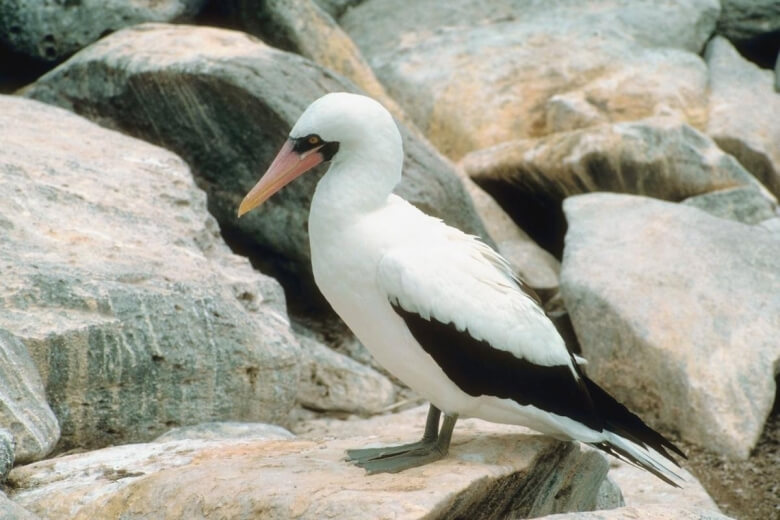
Masked Booby – Sulidae sula – live on Moku Manu Island and on Ka’ula off Ni’iihau. They are heavyset with long wings and a long tail with greenish legs and feet. The Masked Booby is white with black wings and tail and has a long, sharp bill. The black mask around their face is their most noticeable feature. Both sexes grow between 29. l to 33.9 in length and weigh 45.9 to 82.9 ounces with a wingspan of 63 inches. They dive into the ocean from 90 feet for fish and squid.
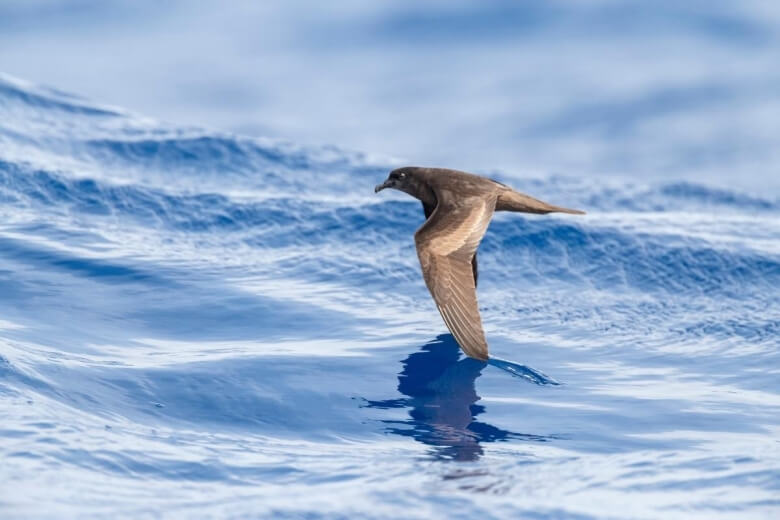
Bulwer’s Petrel – Bulweria bulwerii – can be spotted from spring through fall on Kauai Island at Makahuena Point in Poipu; on Oahu at Makapu’u Point; near Maui at Molokini Islet; and on the Big Island at Keahole Point. This Petrel is mostly brown with a long tail and white stripping on the wings. It grows 9.8 to 11.4 inches in length with a wingspan between 31 to 35 inches. They are rarely seen on land. Instead, they soar above the waters and dive-bomb for small fish, squid, crustaceans, and plankton.
Shorebird in Hawaii
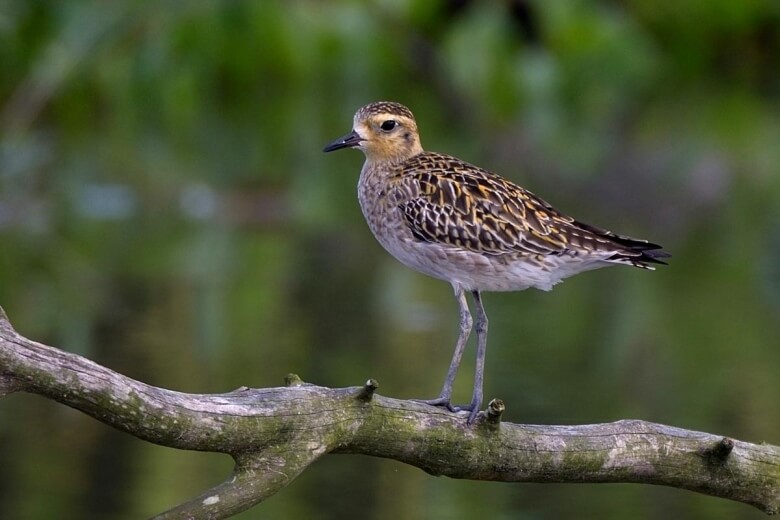
Pacific Golden Plover – Pluvialis fulva – is a medium-sized bird with long wings and legs and a large head. Breeding adults have golden sparkles on black wings with a gray underbelly outlined with a white stripe. When on open fields, they feed on insects and berries. On the shore, they hunt for crustaceans and mollusks. They grow to 9.8 inches and weigh 4.8 ounces with a wingspan of 24 inches.

Sanderlings – Calidris alba – is a small, stout shorebird. During the summer, they have black and white markings on their head and wings with a white underbelly. Their legs and bills are black. Both sexes grow 7.1 to 7.9 inches in length and weigh between 1.4 and 3.5 ounces with a wingspan of 13.8 inches. They chase the waves and hunt for crabs, mollusks, and marine worms that are left vulnerable as the tide recedes.
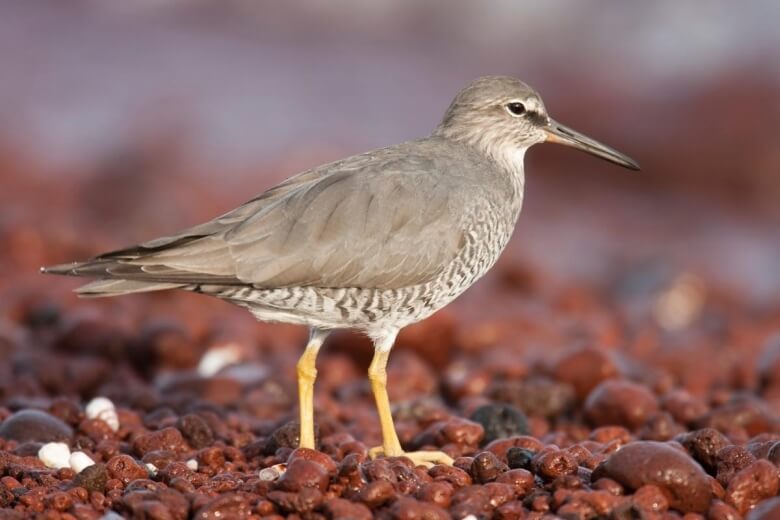
Wandering Tattler – Tringa incana – has long legs, toes, and wings. They are dark gray with a white and gray-stripped underbelly and a white rim around the eyes. Both sexes grow 10.2 to 11.8 in length and weigh 2.1 to 6.0 ounces with a wingspan between 19.7 and 21.6. They have yellow feet with which they roam the shores to catch invertebrates and insects.
Indigenous Birds to Hawaii
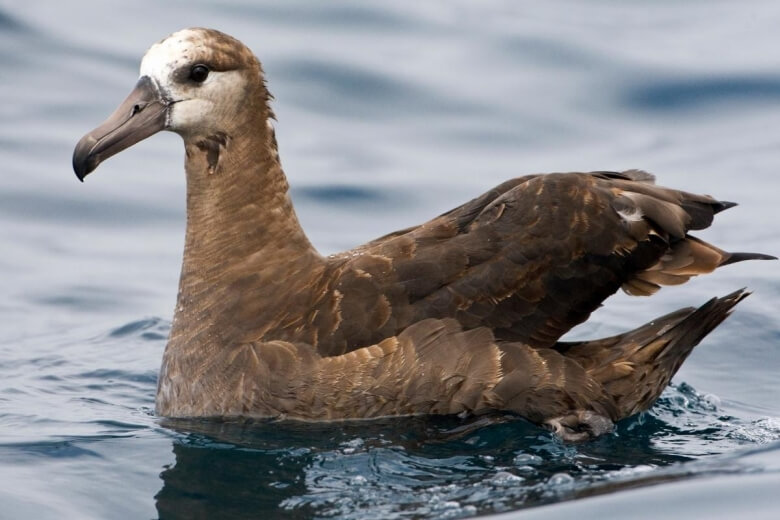
Black-footed Albatross – Phoebastria nigripes – almost 90 percent of the world’s known Black-footed Albatross nest on Hawaii’s northwestern islands. They are an overall dark brown with whitish plumage on the upper tail and undertail or the face. Their feet and bill are blackish with some white feathers in the upper and under the tail.
Both sexes are 25.2 to 29.1 inches in length and weigh 77.6 to 151.7 ounces with a wingspan between 76.0 and 85.0 inches. They soar through the air for hours and come down to the water for a rest. While flying, they keep an eye out for flying fish, crustaceans, and squid. They can use their beak to reach underwater for their prey.
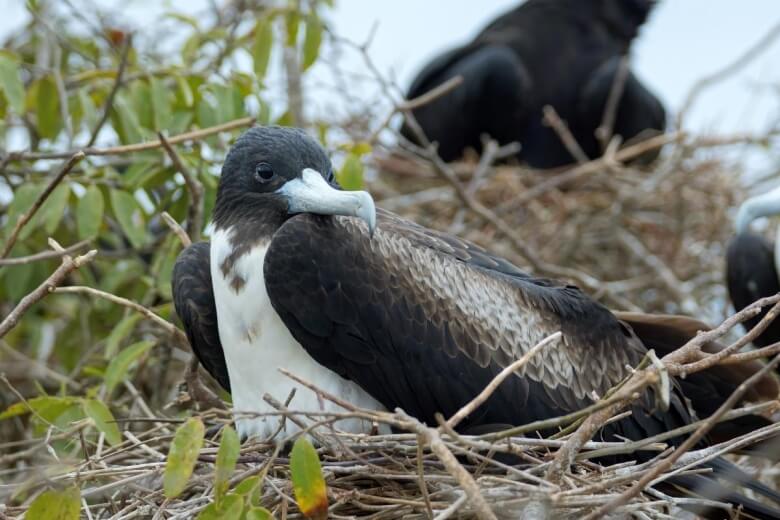
Magnificent Frigatebird – Fregata magnificens can be seen on all Hawaii’s islands, especially Kauai, Oahu, Kilauea Point, Kilauea Point National Wildlife Refuge, Oahu, Makapu’u Point, Ka’ena Point; and on Maui’s, Ke’Anae and Wai’anapanapa State Park, as well as the Big Island’s Pololu.
They are large with long wings, a forked tail, and a sturdy bill. The male is mostly black with a white neck, while the female has a white chest. Both sexes grow to 35.0 to 44.9 inches in length and weigh 35.3 to 67.0 ounces with a wingspan between 85.4 to 88.2 inches. Unlike some other seabirds, they do not dive for their food. Instead, they skim the ocean surface and force other birds to relinquish their catch.
Further Reading on Hawaii Birding
For more information on birding in Hawaii, consider the following guidebooks:
- Raine, Andre F. (Author)
- English (Publication Language)
- Used Book in Good Condition
- Denny, Jim (Author)
Visit these websites for additional information:


